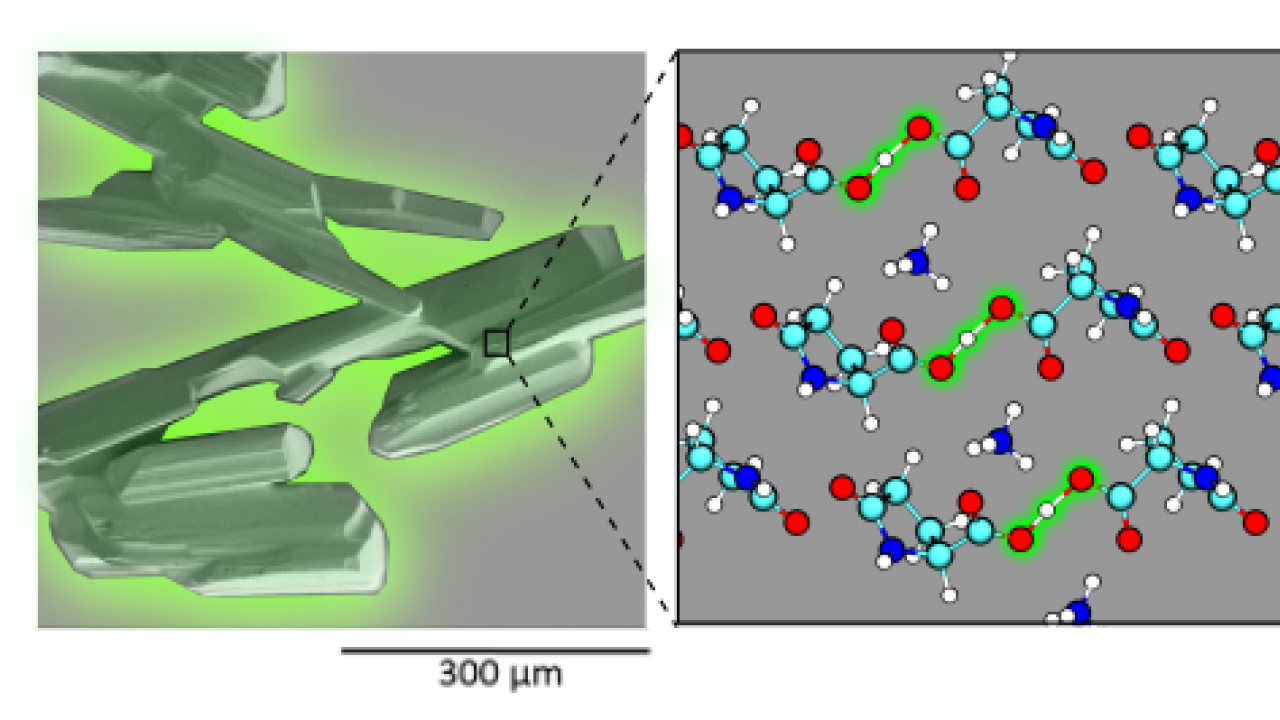
"The most exciting phrase to hear in science, the one that heralds new discoveries, is not “Eureka!” (I found it!) but “That’s funny …” So said science fiction writer Issac Asimov, in one of his most famous insights into how science works. The phrase "that's funny" often leads to new veins of investigation, which is exactly what happened when experimental physicists noticed that clusters of proteins in the brains of Alzheimer's patients could glow.
But why do they glow? And what mechanism is behind it? That's where the theoretical physicists come in. Electromagnetic radiation (a range which includes visible light, ultraviolet light, and radio waves) is temporarily absorbed by chemical structures and then emitted as light, called fluorescence. Fluorescence is not rare in the natural world, but these clusters of proteins did not glow due to the common mechanism.
Six ICTP scientists and their collaborators have investigated the roots of this odd fluorescence and announced results with a paper published in the Proceedings of the National Academy of Sciences (PNAS). "I'm happy the hard work finally paid off," says Muhammad Nawaz Qaisrani, for whom four years of PhD work culminates in this paper. "I'm very proud of this." The team also includes Ali Hassanali and Ralph Gebauer, staff scientists, Uriel Morzan, a postdoctoral fellow, and Emiliano Poli and Luca Grisanti, former postdoctoral fellows, all in the Condensed Matter and Statistical Physics section at ICTP.
"To try to figure out where the fluorescence is coming from, you need physics, chemistry, you need biology, expertise from a lot of different fields," says Qaisrani. "The collaboration involves theoretical spectroscopy and atomistic simulations, multi-scalar simulations," he explains. "We're dealing with the system at different levels, from classical level to a quantum level, then to a state-of-the-art machinery/experimental approach. At ICTP we dove into the theoretical side of things, while the experimental part was done at the University of Cambridge in the UK."
Natural fluorescence is more commonly studied by biologists: glowing plants and animals, such as jellyfish, frogs, and parrots, use fluorescence for communication and camouflage. "Biofluorescence has greatly helped scientists to inspect elusive microscopical processes in a non-destructive way," says Morzan, "both fluorescence that occurs naturally and from bioengineered systems."
Physicists have zoomed down to the atomic level to examine the mechanism behind this common type of fluorescence. It comes from a particular pattern of chemical bonds: a circular structure of atoms with alternating single and double bonds between them. Electrons whiz around this circle, no longer tied to a specific atom. These conjugated double bonds are usually known as aromatic groups (though they have nothing to do with smell). Aromatic groups attached to amino acids, the building blocks of proteins, were thought to be key for glowing cells.
This made non-aromatic fluorescence a puzzling phenomenon. Found in fibrillar protein structures linked to neurodegenerative diseases, such as Alzheimer’s and Parkinson’s diseases, there are no aromatic groups involved. "In these structures, you have a dense hydrogen bond network instead," says Qaisrani. "This paper provides a detailed molecular mechanism to explain the largely unexplored phenomenon of non-aromatic fluorescence," says Morzan.
To make the problem simpler to model than tangles of proteins, the collaboration considered one type of amino acid widespread in brains with neurodegenerative diseases: L-glutamine. Examining only L-glutamine, they looked at what happened when it transformed to include strong hydrogen bonds. This was the simple model used to consider the complicated fibrillar structures, considering similar properties in a much less computationally-heavy system. Added hydrogen bonds greatly amplified optical properties compared to regular L-glutamine. From there, the team's detailed theoretical and experimental work illustrates the role that specific hydrogen bond networks play in producing fluorescence without the expected aromatic groups.
"The strong, short hydrogen bonds make it easier for protons to shift from one structure to another," explains Qaisrani. "We wanted to know what role proton transfer plays in fluorescence." These delocalized protons, or hydrogen atoms stripped of their electrons, change how the bonded atoms interact with each other. Those changes affected the energy states of the involved electrons, making fluorescence much more likely. The properties of L-glutamine with added hydrogen bonds changed in both experiments and computational simulations, displaying the key role of strong hydrogen bonds in fluorescence.
The implications of this work are quite wide-ranging, Qaisrani describes. "This kind of study opens the door to study other organic systems," he says. Optical properties in organic matter are used widely in research and medicine. It has recently been reported that strong hydrogen bonds are quite common in proteins and other biomolecules, meaning the mechanism behind non-aromatic fluorescence may be widely applicable. With the mechanism elucidated, the doors are wide open to potential new biomaterials for a wide range of applications. The future could be bright.
---- Kelsey Calhoun
















